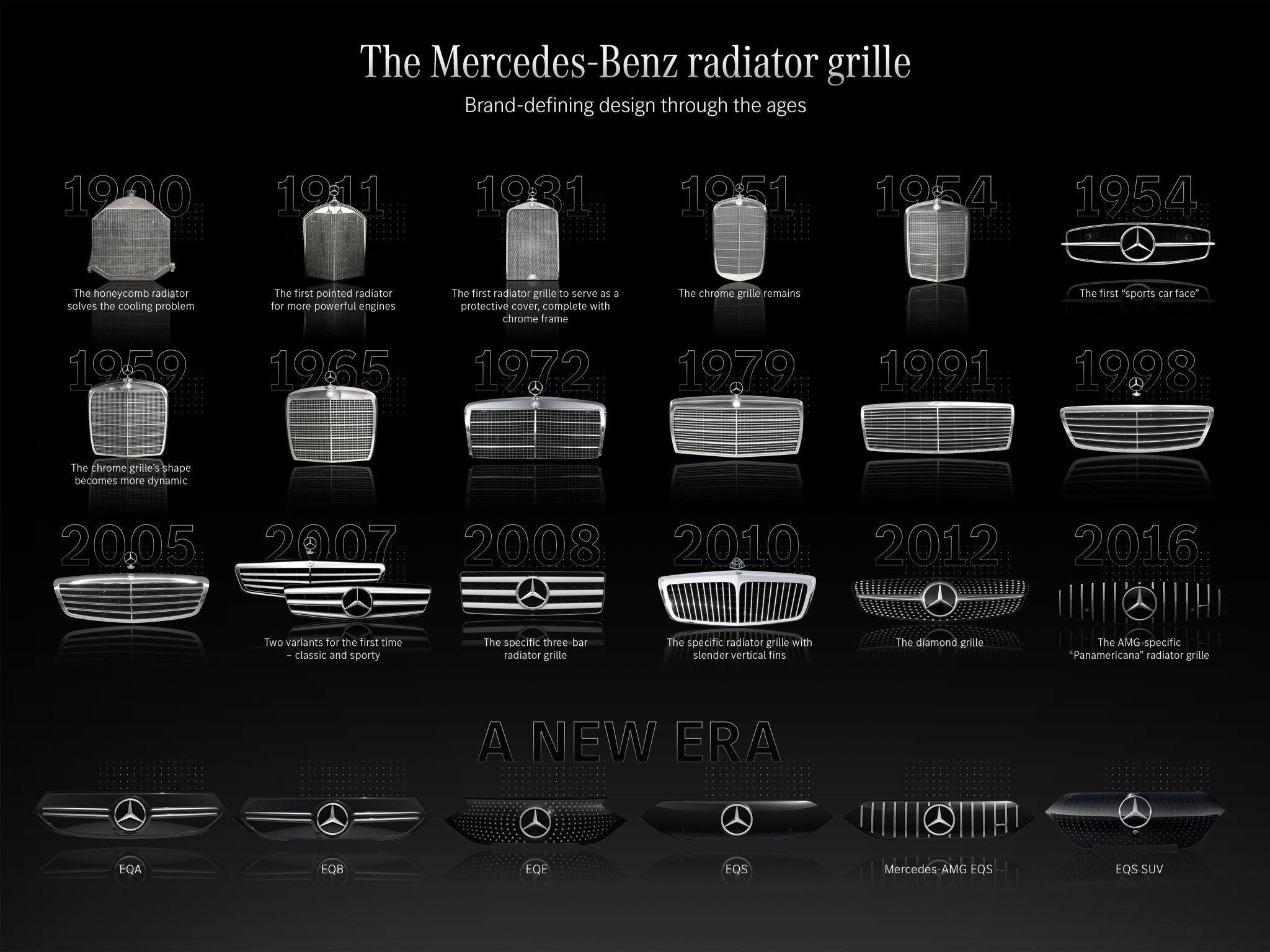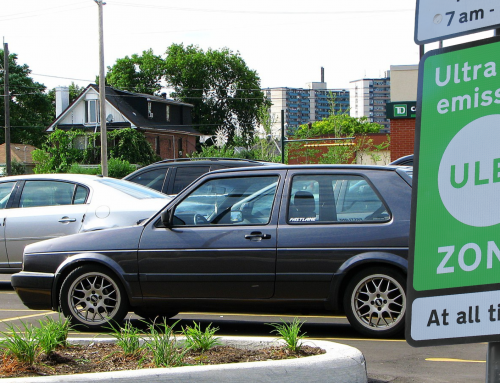*Image by Mercedes Benz AG
With the introduction and evolution of electric vehicles, the face of cars is changing. The traditional radiator grille, a standard feature for over a century, no longer serves a vital purpose. Will this drastically change the look of our cars, and what will take its place?
Why Were Radiator Grilles Needed?
The radiator grille plays a vital role in a car’s cooling system, allowing fresh, cooler air to reach the car’s radiator lowering the temperature and preventing overheating.
As well as helping to cool the engine, grilles can also have other uses. In some cases, the grille helps to protect the front of the vehicle during off-road activities. In other cases, the grille can improve safety as part of the vehicle’s crumple zone.
In addition to these practical uses, the radiator grille is a distinctive feature which improves the look of a vehicle, providing a unique style and helping to attract buyers. The appearance of the radiator grille is a defining factor in the design of a car, part of a car’s well-known face.
As humans, we are programmed to recognise and trust familiar faces. This subconscious process serves the purpose of keeping us safe by aiding us in understanding the intentions of others. This process is at play when we look at a car coming towards us, and the radiator grille forms a significant part of a car’s recognisable ‘facial’ appearance. Since it’s been a defining feature of cars for so long, its absence would take some getting used to.
The History of the Radiator Grille
In the early days of the automobile, one of the most outstanding challenges manufacturers faced was cooling the engine. Then in 1900, a significant breakthrough came with Wilhelm Maybach’s invention of the honeycomb radiator, fitted for the first time to the Mercedes 35 PS. This ushered in a new era in the automobile industry; the engine cooling problem was solved once and for all. Vehicles produced after that were more powerful and reliable than those before.
Until well into the 1930s, it was standard practice worldwide to produce cars with an upright radiator on the front end. In the 1930s and 40s, car manufacturers began to be more creative in their radiator grille designs. While some manufacturers, such as Rolls-Royce, still followed the older arch-shaped grille design, others were experimenting with bell-shaped, cross-shaped and split designs. The grille started to be seen as more than just a practical feature, but rather something that could be used to improve the appearance of a vehicle, bolster brand recognition and attract buyers.
After World War II, radiator grilles began to take on a new look. As cars evolved in design, grilles became shorter and wider. In the decades that followed, the grille became one of the car’s most distinctive styling features. Manufacturers have used grille design to establish brand identity.
A few examples are BMW’s twin-kidney design, Volvo’s diagonal bar and Jeep’s 7-slot grille. When we see designs like these, we instantly know we are looking at a vehicle made by a particular brand.
Radiator Grilles are Not Needed Anymore
Today, the face of cars is changing. Electric vehicles do not need a radiator grille because there is no internal combustion engine and no radiator under the hood. While the design of radiator grilles changed through the years, as shown in the image of the Mercedes grille through the years, the face of a Mercedes, for example, was instantly recognisable by the grille of the time.
Some car manufacturers opt to omit the grille entirely, creating an altogether different look than we have been used to. However, while brands such as Kia, Hyundai and Tesla have removed the grille from their electric vehicles, other brands have been slower to make this leap. BMW, for example, has remained loyal to its iconic kidney-shaped radiator grille, retaining the feature on electric models as part of its brand identity, although some would say BMW has gone to far with the latest iteration which has been likened to a pig’s snout.
With electric vehicles, brands have to go back to the drawing board and reinvent the face of their cars. Ornaments, bars, planks and fake grilles are all being adopted to replace the familiar radiator grille.
With the obsoletion of the radiator grille looming, a new market opportunity has opened up. German-based company, Hella, is one such company capitalising on this with their modern alternative to radiator grilles – integrated multifunctional panels with customisable elements such as lighting and animations. Solutions like these look like alternatives to radiator grilles may still prove functional and stylish.
Where the radiator grille used to perform a specific and universal function, the grilles of the future – if they exist at all – are likely to differ in more than just appearance from brand to brand.
There is no denying with more and more electric vehicles hitting the road, the face of vehicles is destined to change. We look forward to watching these changes but wonder if anything will be better than the traditional grilles we have grown to love.







Leave A Comment